How Much Room Do You Need for a Kitchen Island?
http://www.decor-ideas.org 08/18/2015 23:13 Decor Ideas
Kitchen islands are a much-sought-after feature — almost nine out of 10 of our kitchen design and installation firm’s clients ask about them in their first design meeting. A well-planned island layout can allow a smooth workflow and provide a comfortable space for preparing and cooking food. Islands also frequently provide space for dining, working and storage.
But while a well-planned layout offers much enjoyment, a poorly planned island can be frustrating. This is particularly true if there is insufficient space for an island to begin with. If you’re considering a kitchen island, follow these tips to help you decide whether you have enough space to make an island work for you. And if you don’t, discover what else you can try.
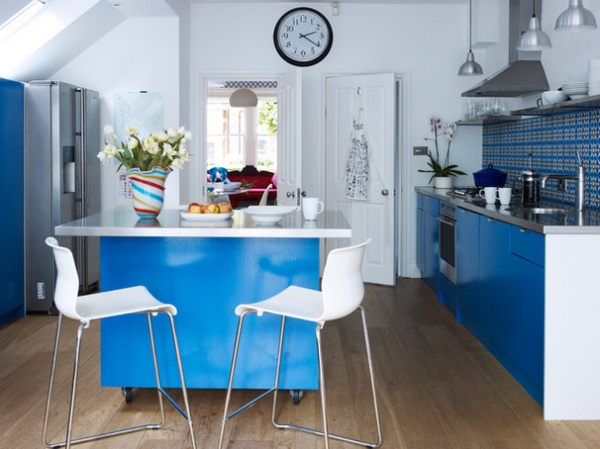
One size doesn’t fit all. When it comes to kitchen islands, don’t assume that if your kitchen is small, an island won’t be possible, or that you can’t include the options you want. There are many possibilities for making an island work, even where space is limited, and most kitchen companies offer options with a reduced depth, a customized height or extra-large cabinets tailored to suit a specific design and the space it is intended for. This vibrant blue kitchen island came with wheels for flexibility.
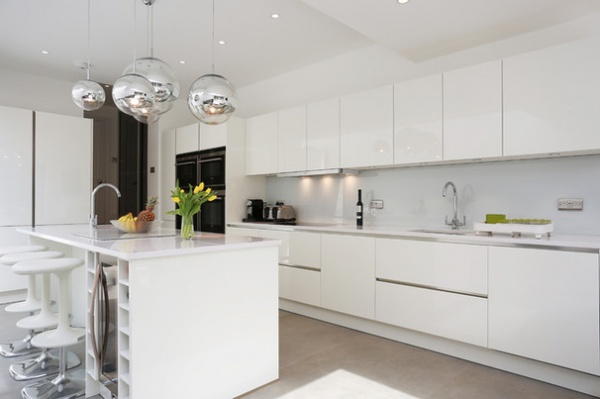
Determine your clearance zone. When clients ask if they have room for an island, we designers must consider factors such as how many people live in the house and how they use the space. But first and foremost, we need to know the size of the room.
In a rectangular room that’s 16½ feet (5 meters) wide and 19¾ feet (6 meters) long, such as this one, the main run of cabinets would be positioned along one of the walls. The depth of the cabinets from the back wall to the front of the cabinets will measure about 25 inches (650 millimeters). Within the design, you should leave a gap between the countertop edge on the back run of cabinets and the island’s countertop edge. This space between the two working areas forms part of the island’s clearance zone, which is the space surrounding the island. The ideal distance for the clearance zone is about 3 feet (1 meter). This is best for enabling free and safe movement around the island and throughout the kitchen.
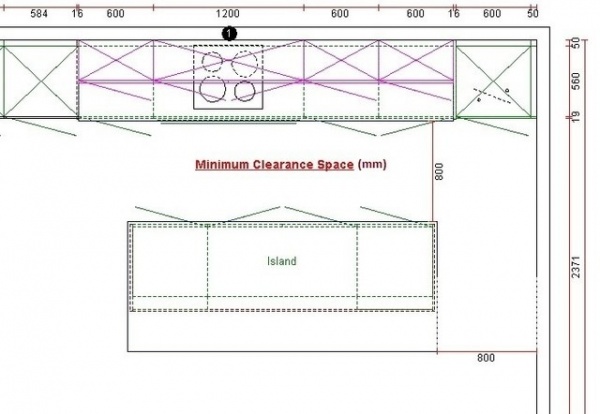
Consider safety. A safe distance for your kitchen island also includes the right amount of clearance between the island and opposing cabinets and appliances, so that all doors, drawers, ovens and dishwashers can be opened safely and without obstruction. Potentially the most dangerous item is always the dishwasher door. These doors open downward, so if you walk past, you risk tripping, falling and hurting yourself or others — particularly dangerous if you’re carrying knives or hot food. As such, it’s best to leave more space. The minimum distance you should allow between two fully extended drawers on opposing runs is about 3 feet (900 millimeters).
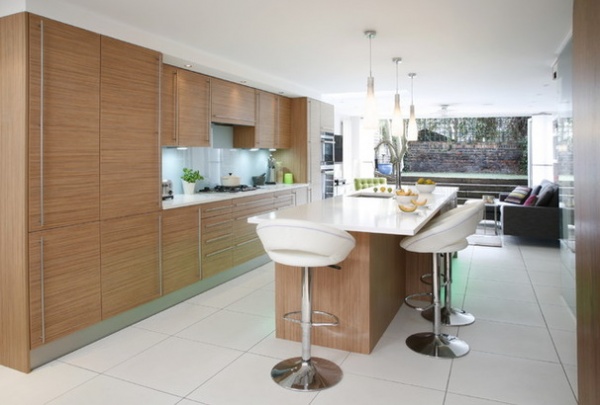
Have your kitchen island tailor-made. This kitchen island combines seating and storage. This could have been challenging, because the cabinets on either side of the kitchen restrict the island to a maximum depth of about 3 feet (900 millimeters) — tricky to fit storage and seating into.
As a solution, the designer made the depth of the island units in the foreground of the image about 2 feet (600 millimeters) — the largest depth possible to allow the 1-foot (300-millimeter) knee space necessary for the undercounter seating. This arrangement makes up the island’s 3-foot (900-millimeter) total depth.
The far side of the kitchen island includes matching cabinets with a depth of 2 feet (600 millimeters) on one side of the island. But rather than using the surplus foot (300 millimeters) of space at that end of the island for seating, the designer added cabinets with a reduced depth of 1 foot (300 millimeters). These are half the depth of standard units and neatly fit the available space while providing extra storage.
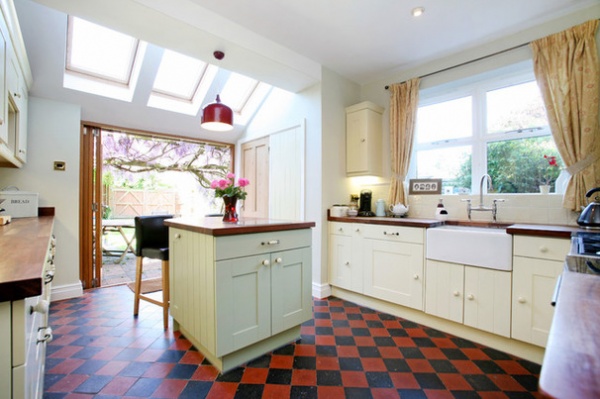
Squeeze an island into a smaller kitchen. Islands can vary in size and shape, but the minimum recommended size of a fixed kitchen island is about 40 by 40 inches (1,000 by 1,000 millimeters), as pictured above. Although small, these dimensions still allow for a practical working island, including the option of integrated appliances.
An island of this size would require a minimal clearance zone of 31½ inches (800 millimeters). This is the smallest possible distance for safe and unobstructed passage. A clearance zone of this distance would be suitable for one person working in the kitchen but not, ideally, for two, as the space would feel cramped and could be hazardous.
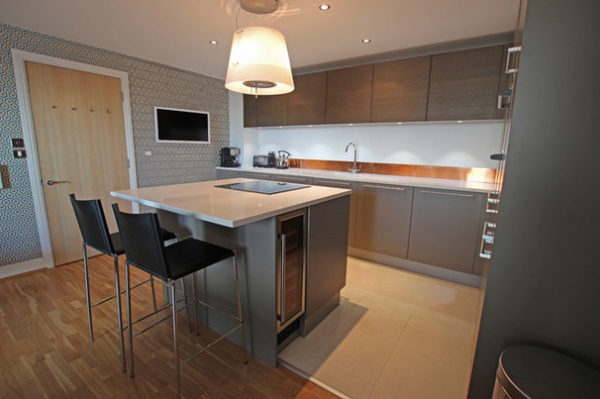
Plan a multifunctional kitchen island. A kitchen island in a small space can be extremely efficient if it is planned from the outset as a multipurpose workstation. An example is this small gray island with seating, pan drawer storage, an integrated wine cooler, workspace and an induction cooktop. There is also an overhead pendant extractor, which saves on space elsewhere in the kitchen. The layout was well-considered to accommodate the owner’s needs, while also maximizing the limited space.
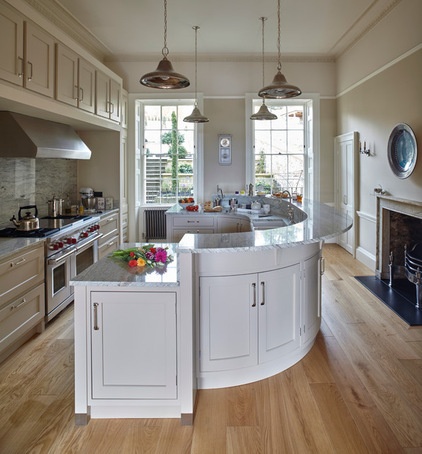
Stay in proportion. The average size of a kitchen island is about 3 by 6½ feet (1,000 by 2,000 millimeters). This would typically have a surrounding clearance zone of about 40 inches (1,000 millimeters). But an island’s size is usually determined by the distances around it, so it makes sense that larger rooms can allow for bigger islands. The design of the large island in this kitchen works beautifully and makes an eye-catching statement. But something too large for the room could spoil your kitchen’s aesthetic. A good kitchen designer will help you determine just how large you should go.
By not keeping an island’s dimensions proportional to its surrounding space, you also risk creating a cramped environment with an impractical and inefficient workflow. Even navigating around an island can be a chore if it’s too big. Also, in a larger space, it might seem logical to allow a wider walkway between the island and work surface opposite — there is a drawback to this, however: A clearance zone wider than about 4 feet (1,200 millimeters) means the layout will be less comfortable to use, as the gap between the island and the countertop will feel less user-friendly.
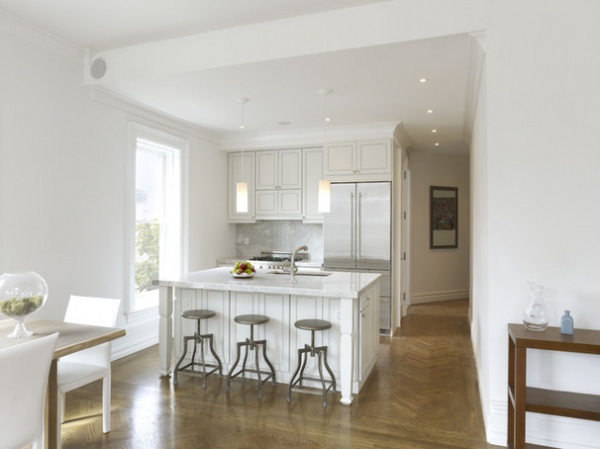
Go for a galley island layout. Chefs typically prefer a galley kitchen layout for safety and ease of use. And this is something you can adapt to use with an island too.
A galley island layout, as seen in this kitchen, allows you to stand at the island but turn with the spin of a heel to reach the workspace behind. In a well-executed design, this allows safe and easy access to all work surfaces, cupboards and appliances during cooking. But beyond a clearance of about 4 feet (1,200 millimeters), most users would have to pivot and then step to reach the countertop opposite. This creates a disconnect between the two spaces and can make the kitchen feel laborious to use.
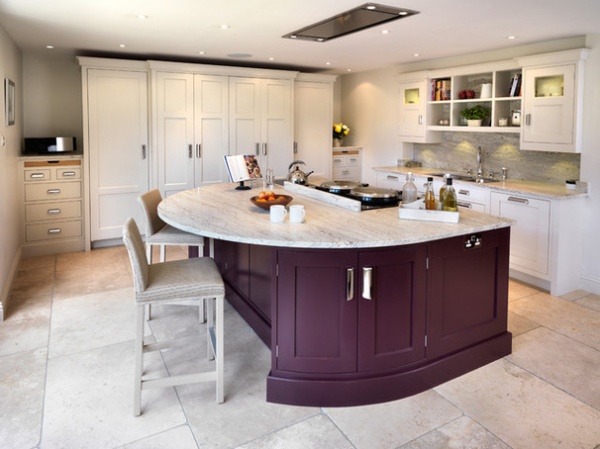
Ensure that the countertop will fit through the passageway to your kitchen. In addition to figuring out if an island will fit your kitchen space, consider the countertop size it will require as well. Some countertop materials have a maximum size limit before requiring a visible seam, which you may prefer to avoid.
Also — and this may sound obvious — be sure to check that your chosen countertop will physically fit inside your house and into the kitchen before you order it. If, for example, your kitchen can be reached only via a narrow flight of stairs or winding passageway, you might have no choice but to reduce the size of the island for the countertop to fit in one piece, and without the unwanted seam.
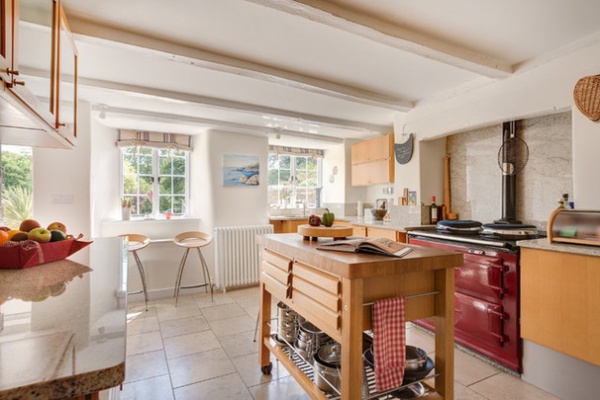
Investigate island-style alternatives. If you are set on a kitchen island but your space is just too small, there are various options.
The most dramatic is to rearrange your layout and open up the room to create more space. This might mean altering some of the internal structure, such as taking a wall down to make an open-plan setting or building an addition.
That, of course, won’t be feasible for every kitchen. So smaller-scale options include the use of butcher blocks, moving islands and trolleys — all great options when there’s no space for an island. Eye-catching in their own right, these small islands can be extremely functional, offering extra storage space and work surface. They are also much less costly than a fixed kitchen island.
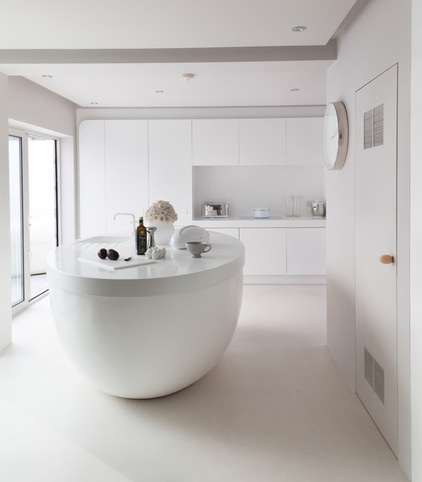
Break from the norm. When it comes to kitchen islands, there is a multitude of possible layouts, shapes and sizes to choose from. You might choose a small island with a raised breakfast bar for extra height and work surface. Or why not go for something really different — like this dramatic curved island?
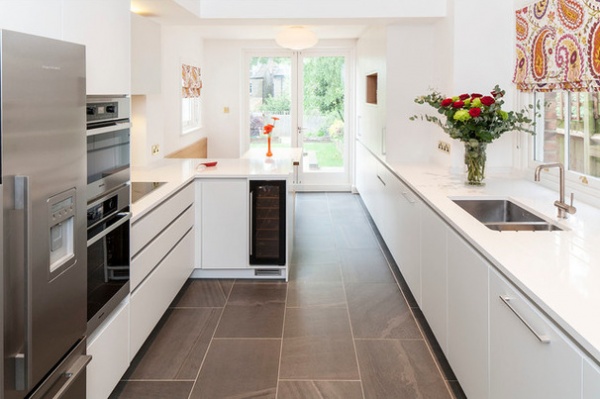
Consider a kitchen peninsula. Finally, there is the option of a kitchen peninsula rather than a full island. The word peninsula comes from the Latin for “almost an island,” and a kitchen peninsula shares most of the same appealing qualities as a kitchen island, but is fixed at one end. Peninsulas are a practical and functional choice for small kitchens because, with one end fixed to a wall, they take up less floor space.
A peninsula also doesn’t require the same clearance as an island. For example, an average-size island, about 4 by 8 feet (1,200 by 2,400 millimeters), would need a clearance zone of about 3 feet (1,000 millimeters). But a peninsula in the same space would, of course, require that extra yard (meter) only on three sides — giving you back valuable space.
Tell us: Have you made an island work in a small kitchen? Please share your experiences and photos in the Comments.
More: Key Measurements to Help You Design Your Kitchen
Related Articles Recommended












